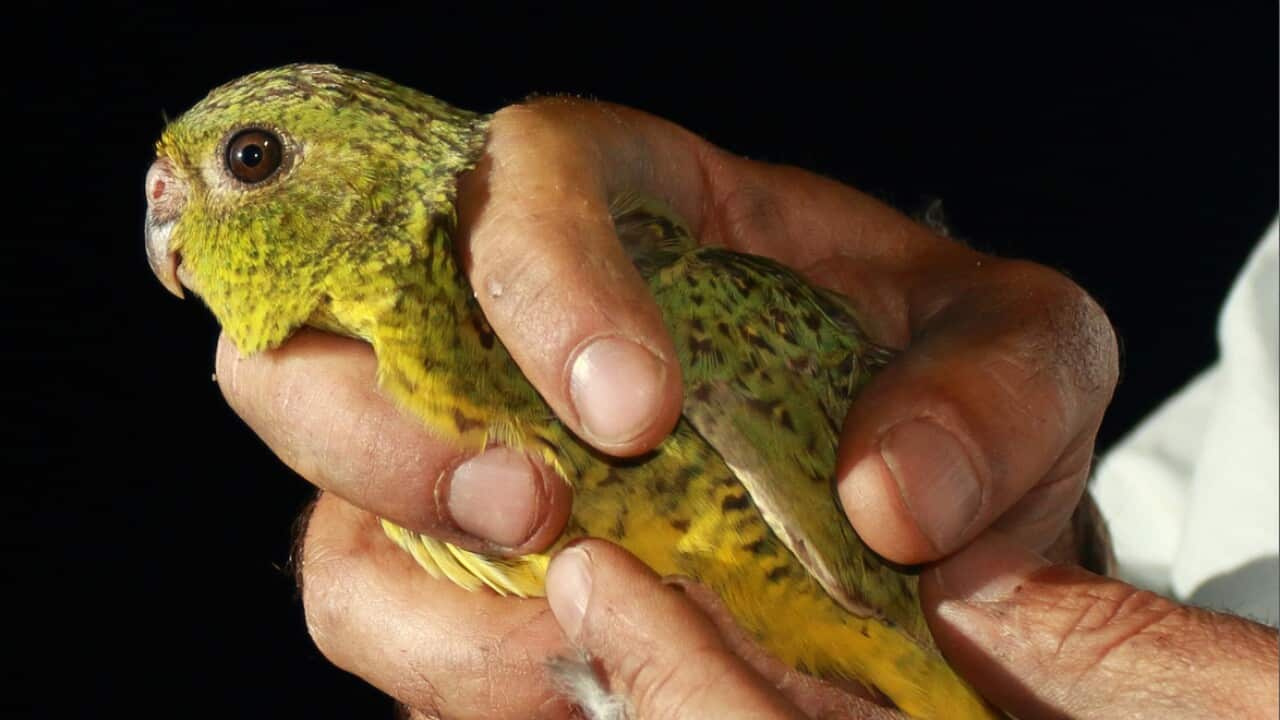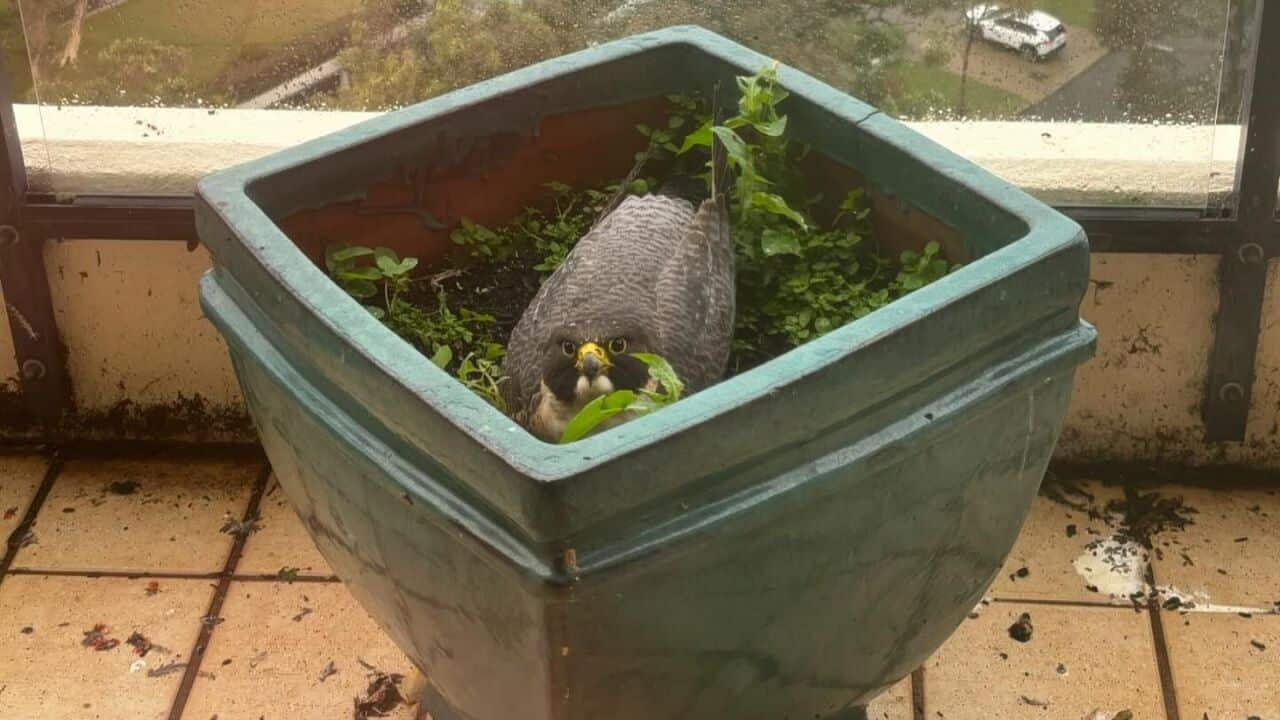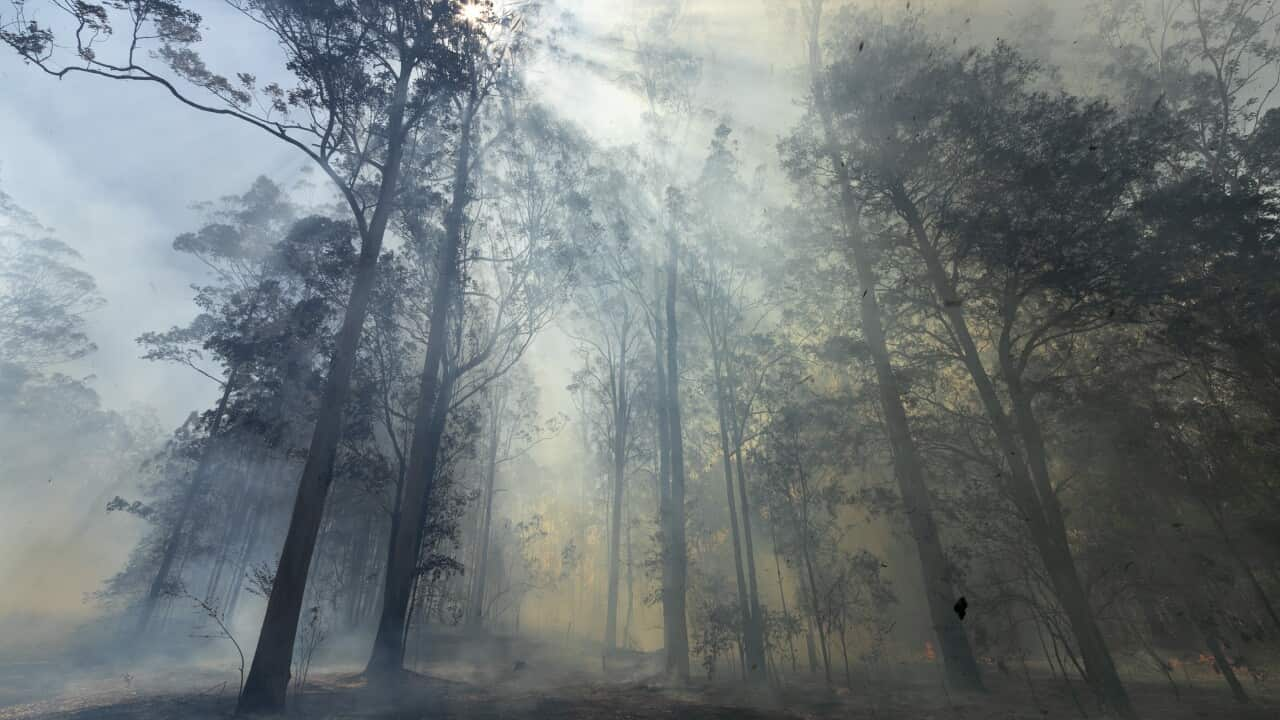Some Australians may have noticed a significant rise in the number of brush turkeys they're seeing in gardens and even in inner-city suburbs.
Recognisable for black plumage, red necks and yellow wattles, brush turkeys were once hunted to local extinction for their meat and eggs in Brisbane and Sydney in the 1800s.
But in recent years, the birds have started to move back into these cities in large numbers.

Source: SBS News
In Brisbane in 1994, 28 suburbs were occupied by brush turkeys. By 2019, they were found in a total of 289 suburbs.
In Sydney, brush turkeys occupied around 3 suburbs in 1994, but a rapid increase in population meant by 2019, they were found in 310 of the city's suburbs.
What's bringing brush turkeys back into cities?
Brush turkeys also tend to nest from July through February, with the majority of chicks hatching in November and early December, so people with brush turkeys in their gardens may notice chicks in the coming weeks.
The chicks, which are fully independent from hatching, look similar to quails with plain brown feathers.
Dr Anne Göth, an ecologist and author of Amazing Annoying Birds: Living with Australian Brush-Turkeys, told SBS News brush turkeys have been attracted back into cities partly by gardens.
Göth said that while Australians once had more typical English lawns and manicured gardens, there has been a movement towards more native species and mulched garden beds, which the birds use to build their large nesting mounds.
Brush turkeys have also been attracted back to cities by food sources such as bird feeders and pet food left outside, as well as a reduction in the number of feral predators, including foxes.
An ancient bird
LISTEN TO

Red list of endangered species now counts 742 Australian species
SBS News
29/10/202405:38
Brush turkeys are one of only three megapode species in Australia (ground birds that build mounds for eggs rather than sitting on them for incubation), alongside the malleefowl of central and southern Australia and the orange-footed scrubfowl that inhabits northern rainforests.
Göth said most megapodes live on remote islands or are highly endangered.
"The brush turkey is the only megapode that lives in the city near us," she said.
Brush turkeys build nesting mounds around the size of a small car, which create heat for eggs through fermentation.
"It takes a few weeks for the heat in there to be stabilised because the heat is produced by fermentation, just like in a compost heap," Göth said.
"Once those few weeks are over, the male actually does something that's quite amazing. He has a temperature sensor in his beak, and he tests the temperature every day."
The male will adjust the temperature in the nest by adding or getting rid of material on the mound every day for the entire breeding season.

Brush turkeys are one of only three species of megapode found in Australia. Source: AAP / Rights Managed/Mary Evans
Living with brush turkeys
However, brush turkeys can become a nuisance to gardeners and farmers due to their destructive behaviour when building incubation mounds.
They can be controversial garden residents because they will strip vegetation, earth and mulch from gardens to build the mounds to incubate their eggs.
If a mound has been established and a male turkey has been standing guard for a few weeks, wildlife rescue organisation WIRES recommends leaving the nest for 60 days to ensure eggs have been allowed to hatch and young brush turkeys have emerged and dispersed.
Brush turkeys can also get into trouble in urban and suburban environments.
Dr Tania Bishop, a wildlife veterinarian from WIRES, said most of the calls they receive about the birds are due to them being hit by cars.
"They're very heavy, and they don't fly amazingly well — they're also not particularly smart. Sometimes, we also get calls because they've been attacked by dogs," Bishop said.

The malleefowl is an endangered species of megapode found in Australia. Source: AAP / Rights Managed/Mary Evans
She said there can often be confusion with the chicks, as even though they're independent, many people will assume they've been lost from nests and bring them into WIRES for care.
Although brush turkeys have been protected as a native species of Australia since 1918, and their mounds cannot be destroyed if they contain eggs or chicks, the birds have been targeted by people.
They are hunted illegally, and WIRES reports cases of live brush turkeys seen with arrows through them.
In late 2023, the Sydney Morning Herald reported an incident of brush turkey poisoning, with two brush turkeys killed by suspected pellet bait in Mosman.
Harming a brush turkey can incur hefty fines in NSW and Queensland.
To deter pesky brush turkeys from ruining gardens, Göth suggests deterring them by cutting off branches above mounds as they start to build them, as they need shade for temperature regulation.
Göth said automated sprinkler systems that squirt water at birds, keeping pet food inside and having closed compost systems can deter the birds from creating nest mounds in gardens.
However, for those who find they are seeing more brush turkeys in their gardens, she said Australians could also learn to appreciate them more.
"They're watching one of the most ancient birds in Australia, we know they've been around for millions of years, that they're having a remarkable comeback and showing a remarkable resilience to surviving in the city," Göth said.
"A lot of people really fall in love with them, including the tourists who come to Australia."
Bishop also warned that while some cities are experiencing a dramatic rise in brush turkey numbers, they may not be around forever, as more developments are built without any natural habitat left around them, which may force the brush turkeys out of cities in the future.
"We're seeing a temporary spike right now, but unfortunately, there will be a drop in time," she said.















